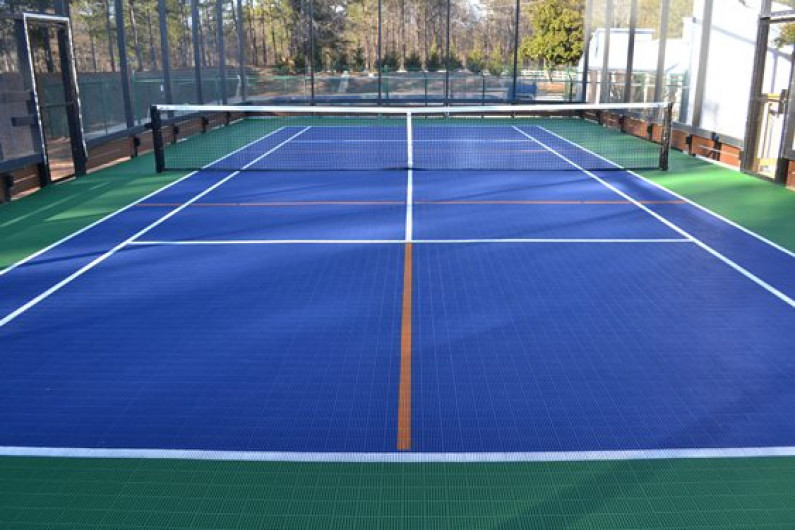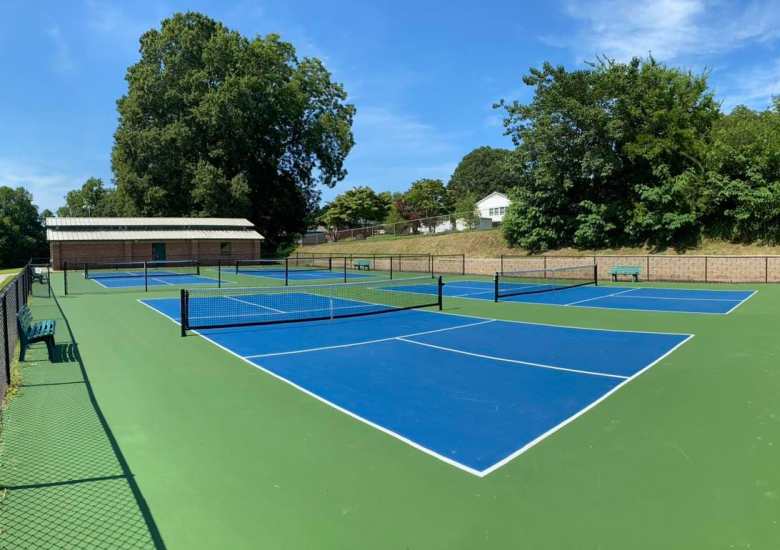How Local Rules Impact Your Pickleball Court Construction Plans
How Local Rules Impact Your Pickleball Court Construction Plans
Blog Article
Boost Local Interaction With Community-Driven Pickleball Court Projects
The development of community-driven pickleball court jobs offers an unique opportunity to promote regional interaction and reinforce area connections. The real question remains: how can these grassroots efforts be strategically carried out to make sure sustainability and inclusivity in varied areas?
Relevance of Area Involvement
Area engagement is a crucial component in the successful development of pickleball court jobs, as it fosters a sense of possession and cumulative obligation among citizens. When neighborhood members are actively involved in the planning and execution phases, they are more probable to promote for the job's long-lasting success. Engaging stakeholders such as neighborhood gamers, households, and leisure groups ensures that the centers fulfill the diverse needs and choices of the area.
Additionally, neighborhood engagement grows a helpful atmosphere where residents really feel empowered to add their sources and ideas. Pickleball court construction. This collaborative strategy can cause ingenious solutions that boost the design and functionality of the courts, making them extra enticing to a larger target market. Furthermore, involving homeowners in decision-making processes can reinforce social ties, advertising inclusivity and unity within the neighborhood
The visibility of neighborhood support for a pickleball project can likewise play a pivotal duty in securing financing and approval from regional authorities. By demonstrating a common dedication to leisure growth, neighborhoods can properly promote for sources and policy modifications that prefer the establishment of pickleball courts, inevitably enriching the regional society and recreational landscape.
Actions to Launch a Job
Initiating a pickleball court task requires a methodical technique that develops on the structure of community interaction established in previous conversations. The primary step is to construct a task board consisting of neighborhood stakeholders, lovers, and representatives from pertinent companies. This varied group makes certain that several perspectives are taken into consideration.
Next, carry out a needs analysis within the area. Studies, emphasis groups, and public meetings can be efficient in assessing passion and gathering input on potential court locations, preferred features, and organizing choices. Following this, create a task strategy outlining obligations, goals, and timelines.
When the strategy is in location, engage with local authorities to understand zoning policies and any type of required permits. Interacting transparently with the neighborhood throughout this process is important, as it promotes count on and encourages further participation.
In addition, arranging neighborhood events can help maintain energy and excitement. These events can serve as systems for more discussion and help to enhance neighborhood connections. Document every action taken and preserve detailed documents, as this will be beneficial for future stages of the job, consisting of financing and resource procurement.
Funding and Resources Available
Safeguarding funding and resources for a pickleball court job is frequently a crucial action that can identify the task's expediency and success. Various opportunities exist for obtaining financial backing, varying from public funding to personal sponsorships. City government grants, usually focused on advertising community wellness and entertainment, can provide significant sponsorship for such initiatives.
Along with government resources, not-for-profit organizations and structures regularly provide gives specifically for sports and area development jobs. Involving local services as enrollers can also be a worthwhile approach; numerous business aspire to purchase neighborhood campaigns that boost their corporate social obligation account.
Crowdfunding platforms have emerged as a practical choice for grassroots fundraising, allowing area participants to contribute straight to the task. This strategy not only elevates funds yet likewise cultivates a feeling of ownership among participants.
Design and Planning Factors To Consider
Effective design and preparation are basic parts of any kind of effective pickleball court job complying with the purchase of funding and resources. An extensive evaluation of the proposed location is vital; this consists of examining availability, distance to existing neighborhood facilities, and the potential for presence and involvement.
The design of the court should stick to main dimension specs while considering the bordering setting. Incorporating functions such as pop over to these guys seating, color structures, and appropriate lights can dramatically improve player experience and viewer pleasure. Products chosen for the court surface need to prioritize resilience and safety and security, with choices like acrylic or asphalt offering optimal efficiency.
Including community participants in the design procedure fosters a feeling of ownership and makes certain that the facility fulfills regional demands - Pickleball court construction. This can be accomplished via public examinations and surveys, enabling stakeholders to express their choices and concerns
Sustainability must also be a concern; incorporating green materials and methods can add to long-lasting stability. Producing a maintenance plan to guarantee the court continues to be in superb condition will support continuous area engagement and involvement in pickleball tasks.

Success Stories and Study
Highlighting the transformative influence of community-driven initiatives, numerous website here success tales illustrate just how collective initiatives have caused the advancement of vibrant pickleball courts throughout various areas. One noteworthy instance is the effort in a little town in Florida, where citizens banded with each other to convert an underutilized tennis court right into a dedicated pickleball center. Through fundraising events and collaborations with regional organizations, the neighborhood elevated sufficient funds to mount new internet, resurfacing, and lines, inevitably promoting a dynamic hub for regional gamers.
Similarly, in a suburb of California, a grassroots motion arised to create pickleball courts in a regional park. The task not only involved volunteers for building and construction but likewise consisted of workshops to involve community members in the sporting activity. Because of this, the courts became a centerpiece for social communication and fitness, drawing in gamers of every ages.
These study exemplify exactly how community-driven tasks can boost local interaction, promote exercise, and reinforce social bonds. By leveraging cumulative resources and enthusiasm, communities can effectively produce and maintain pickleball centers that offer varied populaces and cultivate a sense of belonging.

Conclusion
Finally, community-driven pickleball court tasks work as essential read this instruments for boosting local involvement and fostering a feeling of belonging among citizens. By focusing on stakeholder involvement throughout the preparation and implementation phases, these campaigns can efficiently resolve diverse neighborhood demands. Furthermore, leveraging readily available resources and taking a look at effective case research studies can give important understandings for future tasks. Ultimately, such efforts add to the makeover of public spaces into vibrant facilities of fitness and social interaction, enhancing area ties.
The appearance of community-driven pickleball court tasks offers an unique opportunity to foster local engagement and strengthen community ties.Community engagement is an important aspect in the successful advancement of pickleball court projects, as it fosters a sense of possession and cumulative duty amongst citizens. When neighborhood members are actively involved in the preparation and execution phases, they are a lot more likely to advocate for the project's lasting success.Launching a pickleball court job needs a systematic approach that constructs on the structure of neighborhood engagement established in previous conversations. The job not only involved volunteers for construction yet additionally consisted of workshops to engage community participants in the sporting activity.
Report this page